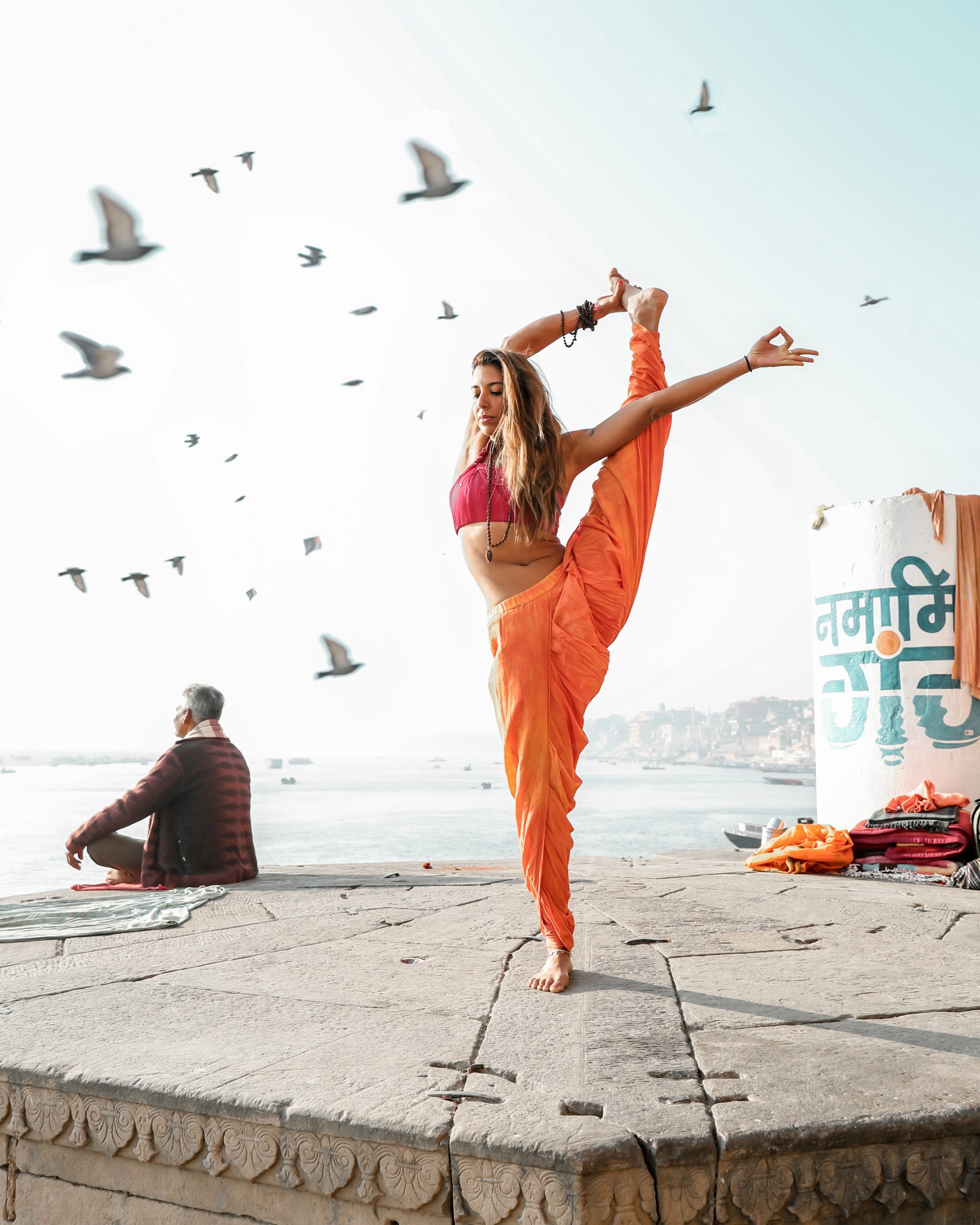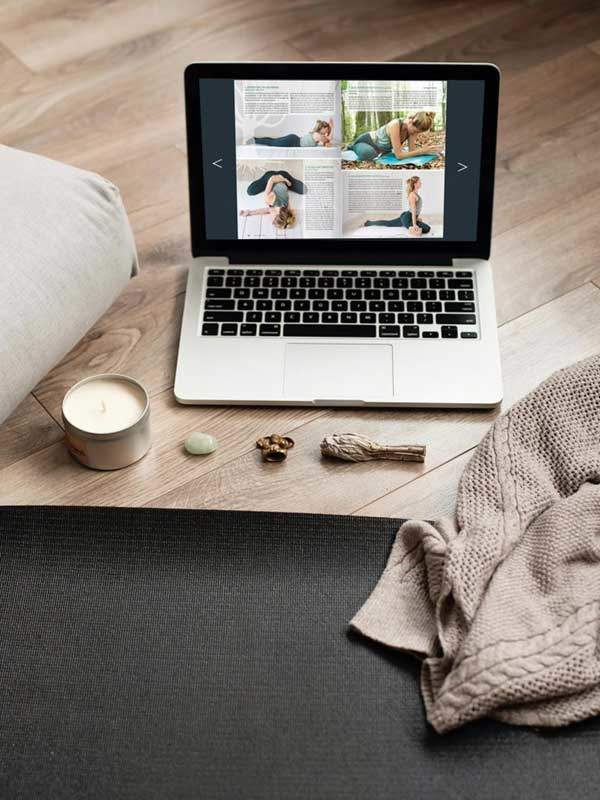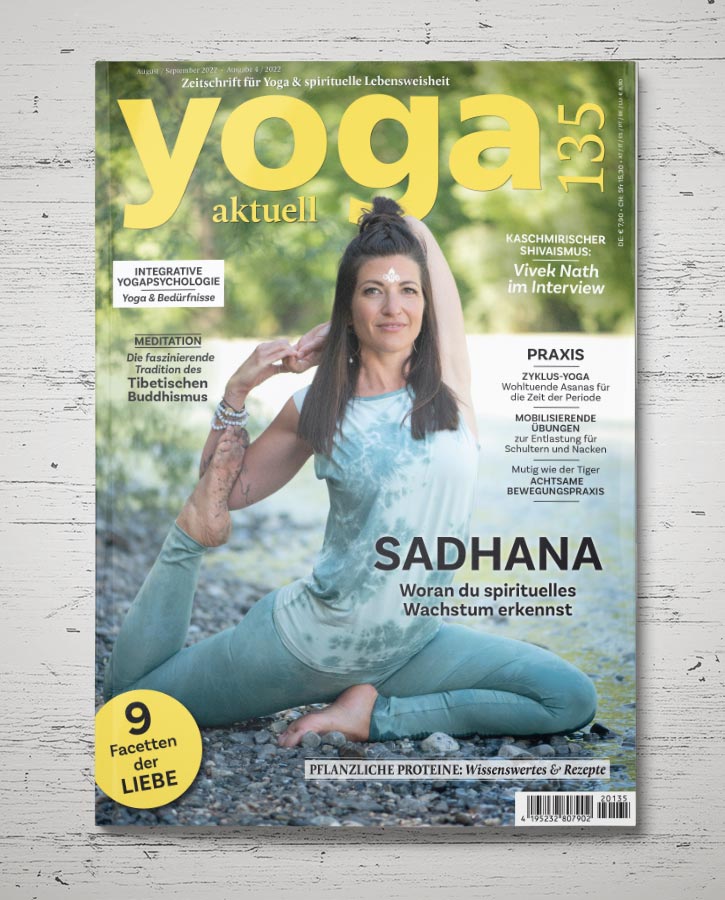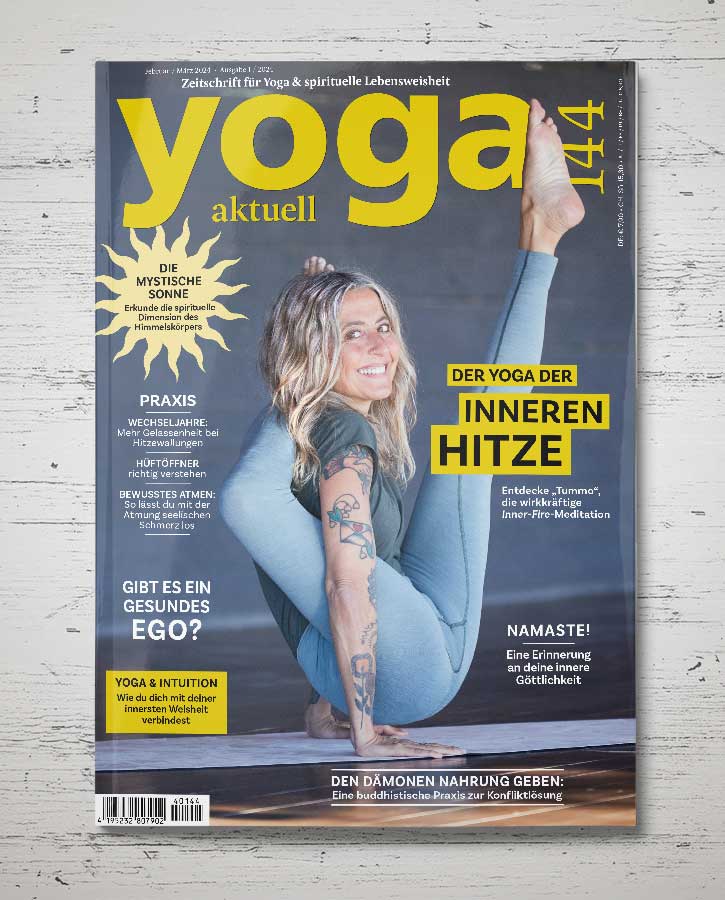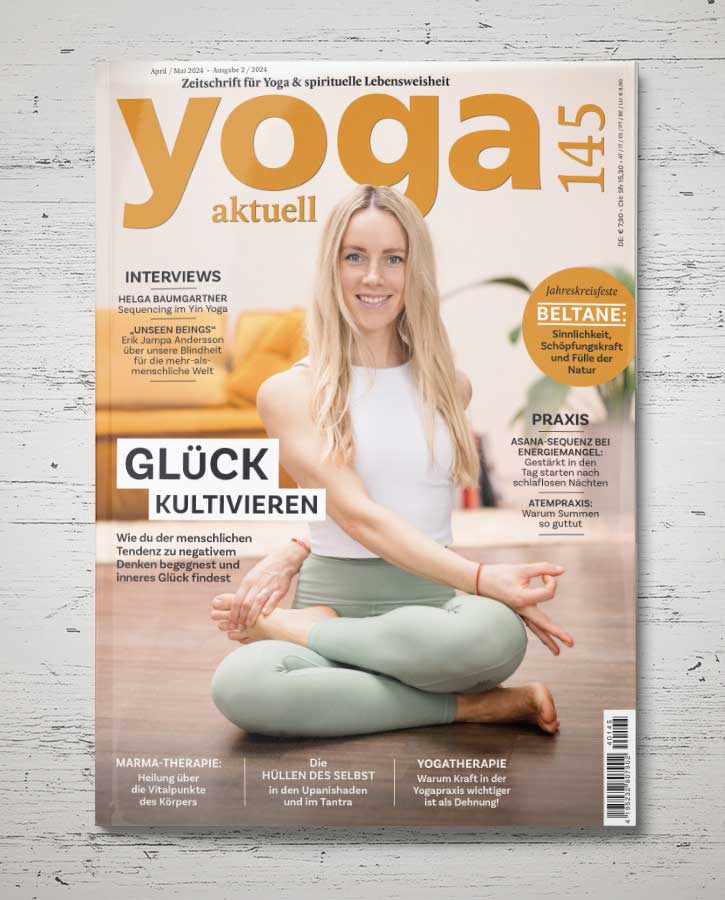Indian Yogini Deepika Mehta, who encouraged many people with her healing pathway from severe injuries, on her practice in which she is combining discipline and clarity with fluid softness, and her special connection to Shiva.
Deepika Mehta is one of the most famous yoga teachers in the international Ashtanga yoga scene. In a conversation with YOGA AKTUELL, she talks about her love for movement and about the bond and spirituality she derives from her practice.
I don’t believe in the dogma of religion, I believe in the freedom of spirituality.
Interview
YOGA AKTUELL: You had other plans for your life and came to yoga via detours, right? How did Yoga find you?
Deepika Mehta: So, I was not really into Yoga, I was more interested in dancing and mountaineering. And I had an accident, I fell from a very high rock, broke a lot of bones in my arm and leg and was pretty much bed ridden for 2 years. I think along that journey, when I was really looking to find a way to heal myself, I discovered yoga and I started reading a lot about the idea of the mind and the body. You know, if you believe you can heal yourself – that your body has the potential to, and I think that was my journey into getting into yoga.
Ashtanga Yoga came later, right? How come, you started to learn with Pattabhi Jois?
I was starting yoga at the Sivananda Yoga Centre in Kerala and there I saw somebody doing this fluid practice which looked incredible and then I found out from that person that is was Ashtanga. Then I did some research and I found out that there was this teacher in Mysore who was teaching this practice. And that’s how I finally came to Mysore in 2001. And I studied with Guruji Sri K. Pattabhi Jois.
Today you are a KPJAYI Level 2 Authorized Ashtanga Yoga Teacher. How did your yoga path unfold since your first time in Mysore?
Ever since that first time in 2001 I continued to learn from different teachers, you know I loved the practice so much. I continued to study with various other teachers: I studied with Rolf in Goa, I studied with Richard Freeman, Dena Kingsberg, lots of different teachers, Lino Miele in Kerala and I kept coming back to practice with Sharath and then finally, he authorized me Level 1 and then Level 2.
You are still a passionate dancer and have even performed on a TED stage. In the documentary „My Dharma“ you say „Yoga is my grounding and I feel, dance is my freedom“. There are certainly many parallels between yoga and dance, do you combine both energies consciously in your practice and in your lessons?
I love the grounding that Ashtanga gives me. You know I am naturally not a very disciplined person, but I feel that the practice of Ashtanga really helps me to have a routine and helps me to find a lot of grounding. But I do sometimes miss the fluid element of dance and the kind of creative freedom that I used to have just free-flowing with dancing. But I do try to bring in that concept of fluidity into my practice and even though Ashtanga is a very strong practice I try to combine a lot of softness. I try to use all the principles of just finding softness, fluidity, more feminine energy, little bit of creativity sometimes in my hands, very subtly. A little bit of waves when I go into back bending, a little bit of waves when I go into forward bending and so I feel like that opens up my spine as well. And I love bringing that in into the yoga practice.
How does your personal practice look like? E.g. do you practice every day the postures you have been given by Sharath and Pattabhi, and do you do any other practices (spiritual or physical) apart from Asana practice?
I try to do the Ashtanga practice 5 times a week, because we are travelling a lot it is very difficult sometimes to fit it in. But other than that I also like to do meditation and when I have the time I like to do some handstand training or some kind of an other work-out, like working on my legs, because I like to hike and I feel like it’s important for me to have that strength and the cardiovascular fitness so that when I hike I can stay fit. So, once a week I try to do some other kind of training. And that’s what my week looks like.
I’m a big fan of your Purple Valley videos on YouTube, like „Fluidity and Isolation Drills“ but I also like your „Everyday Essentials“ a lot. Are these things that you regularly supplement your ordinary Ashtanga practice with?
I use all the backbending drills that I’ve done in the Purple Valley videos on YouTube and also I do the hip opening stuff pretty much every day. Whenever I have to do a deep backbend I use all those drills that I’ve shown in the Youtube videos. And when I feel that I’ve done too much hiking and my legs are stiff, then I use a lot of those hip openers. So, yeah, I incorporate all of that into my own practice.
What do you recommend someone who does not have much time to practice: which essentials, asanas or other exercises should definitely be part of their daily program?
I feel for somebody who doesn’t have much time, definitely they should do the practice because I feel like it is very healing, very grounding, it gives you a lot of focus, a lot of concentration. If they have some extra time, I think just maybe even five minutes of focusing on some core strengthening work is very good, it gives you a lot of stability and then if you have some extra time, depending on if you are more stiff in back bending or hip opening poses. One of those two you could choose and just spend five or ten minutes working on that.
Because of your own physical drawbacks you might have developed a lot of compassion for people with physical limitations, e.g. injuries … What is your tip for those people – should they pause or modify?
Yes because of my own injury I definitely have a lot of compassion towards people who have injuries or who are in pain or who have any kind of problems going on, who have some kind of struggle going on. I definitely relate to that very deeply. So, when I’m teaching – keeping the integrity of the practice – I allow people to modify. So, if they’re having some kind of pain in their hips or knees, I definitely allow them to modify Marichyasana or Janu Sirsana poses. If they’re having pain while backbending for sure again I’ll give them modifications. I feel people need to be able to modify the practice for them to fit it into their lifes.
You are one of the most famous female yoga teachers in modern India. Do you think you teach differently than men because of your womanhood and if so, how?
I don’t know if I teach differently than men, but like I said, I mean I can be very intense as well, So, I don’t know if that’s a quality which is feminine or masculine. But I can be very intense. I can be very strict. I definitely have that quality because I’ve studied with a lot of indian teachers and my teachers were strict on me –very old fashioned, very old school. So, I do have a certain element of that when I teach – especially with indians. At the same time I think – like I said – I have a lot of empathy and compassion towards people – anybody who is going thru a struggle, I have a lot of compassion for them. So, I do bring in a strong element of that into my teaching. I would say, there is definitely a lot of feminine, but there is also that intensity which I have, which maybe be considered masculine.
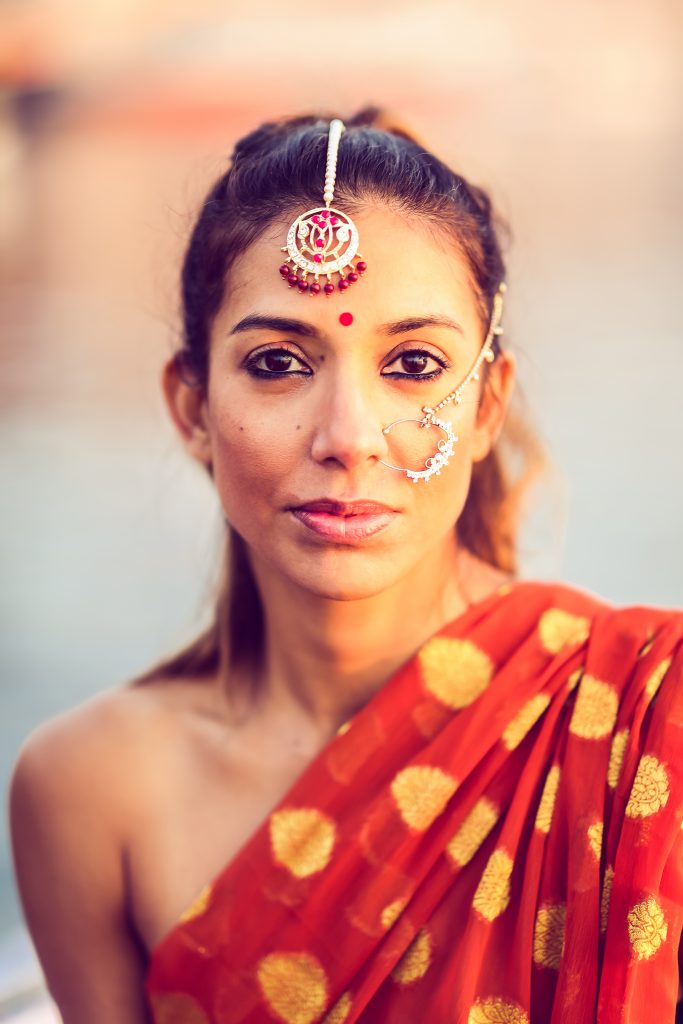
I imagine that your yoga classes are very popular with Indian women. Do you feel like you are a role model for them? And how do you think does modern yoga increase the self-confidence of women living in a patriarchy?
I think a lot of modern indian women do relate to me and maybe you could say I am a bit of a role model for women in modern Yoga in India. I think, for sure I feel the Ashtanga practice and yoga definitely empowers women a lot in India because – what I love about the yoga practice is, it gives you a lot of believe and confidence in your own abilities. It makes you understand that you know the power always lies within you. So, that’s a very important quality for women to have, especially like you said in a patriachal country like india. I’ve noticed a lot of changes in a lot of people. A lot of people who come into my classes, especially women. After a while, I mean I wouldn’t say, it’s because of me, it’s because of the yoga practice, they feel like they have the confidence to do things that they would have never done before. Like one of my students, because of doing Ashtanga for a while, she ended up going for a very big trek in India all by herself. And you know before that she never believed she could do that by herself. Also because of doing arm balances, handstands, yoga poses which require strength, it gives them a lot of ability and confidence in themselves – physically and mentally.
How important is spirituality for you and how do you integrate yogic philosophy in your life?
For me the reason I practice yoga honestly is because of the whole spiritual aspect. If not, you know I could easily just find that same feeling in a workout, because I love physical movement. But for me the thing that differentiates Yoga from exercise is the spiritual aspect that I feel. And for me the connection with god is really the most important part of my every day living. I pray a lot. I have a lot of devotion. As often as I can I do pilgrimage, I visit temples, but not a very dogmatic way. I don’t believe in the dogma of religion, I believe in the freedom of spirituality. So, it could be connected to any form of god. But the connection that I have the deepest is with Lord Shiva, but I feel that same element of emotion towards a lot of other gods, even towards Jesus Christ. So, for me it’s just with the source and I have a very strong connection to nature.
Growing up in an Hindu environment, what would you say, which Hindu deity and their typical properties most suit you and your character? With which goddess or god do you identify the most and why?
It’s changed, but I do worship Lord Shiva a lot. I really don’t know why, I don’t have an answer for it. But since I was a child I felt a very strong draw towards Lord Shiva, maybe it’s because he is a yogi, he lived in the mountains, there is something about his intensity, destroying all the elements that he doesn’t need, all of those things I resonate with very strongly.
If you could choose one thing you know now, that you wished you knew back then, when you started with yoga – what would that be?
Back then I would have definitely worked a little bit more on my jump-backs, because there was not so much focus on technique and strength when I started. It was just all the natural flexibility you had. But I find if I knew back then, I would have definitely started working on strength and how to jump back and jump through and all that stuff, but you know maybe there was a reason why I didn’t really focus on that stuff and maybe that is why I felt such a deep spiritual connection to the practice. So: no regrets.
Thank you for this interview!
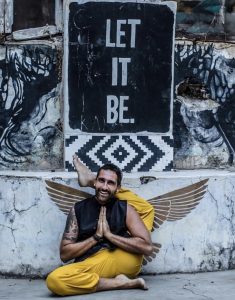
All pics by talented photographer Alessandro Sigismondi!
Find him online:
www.sigismondiphotography.com
Instagram: sigismondiphotography


